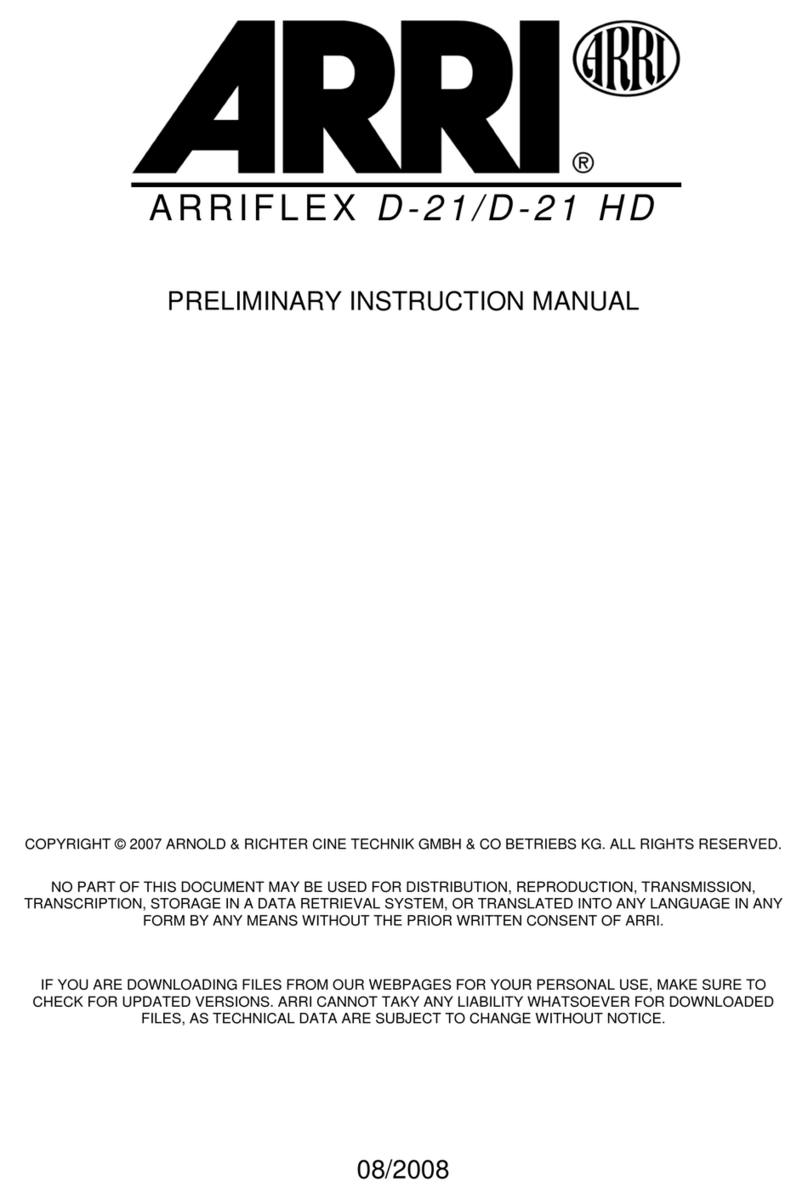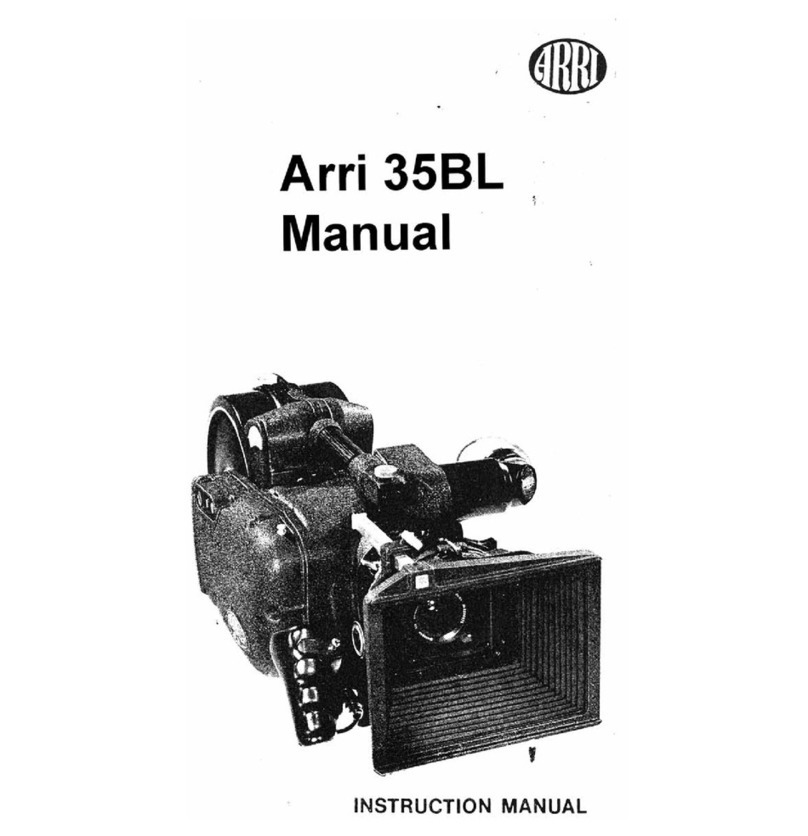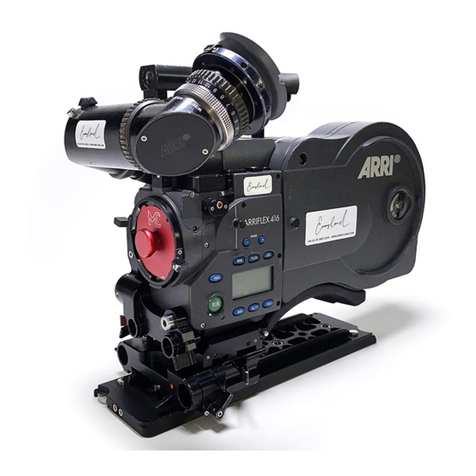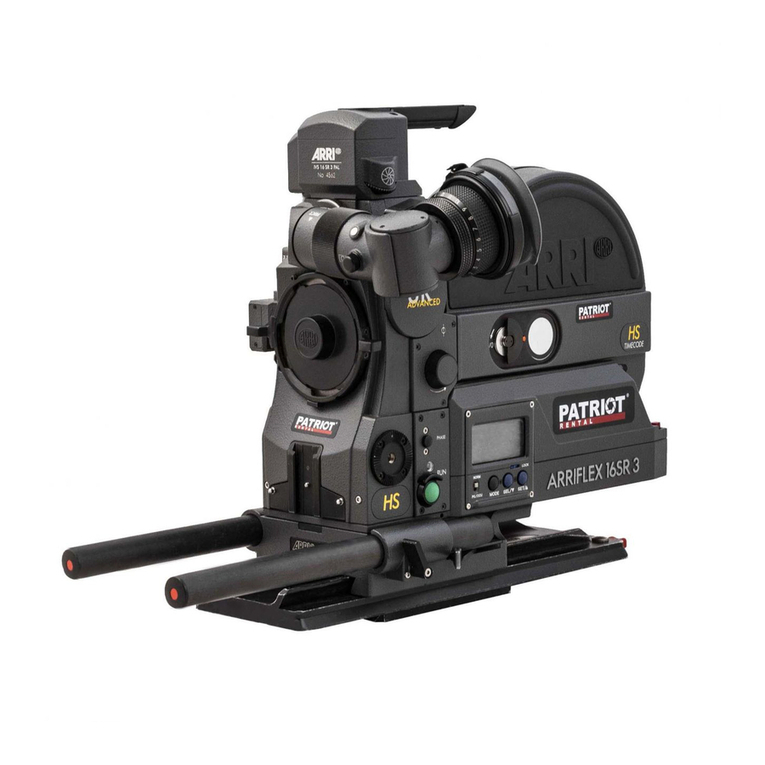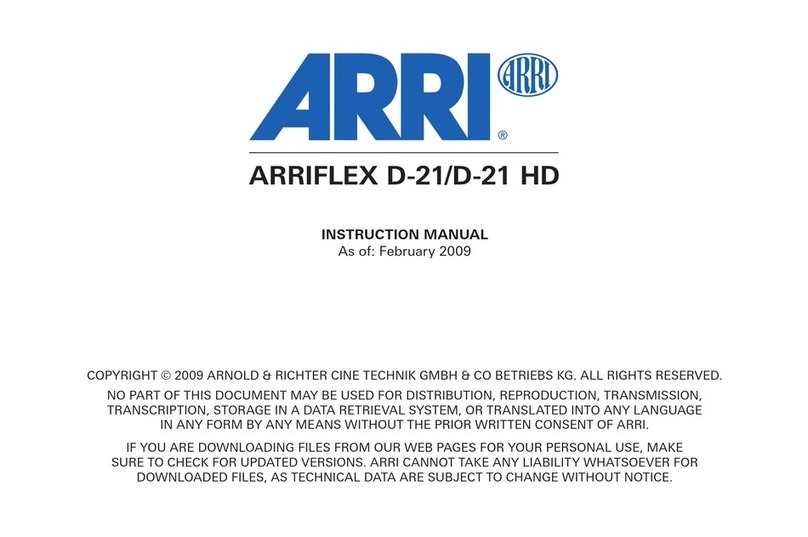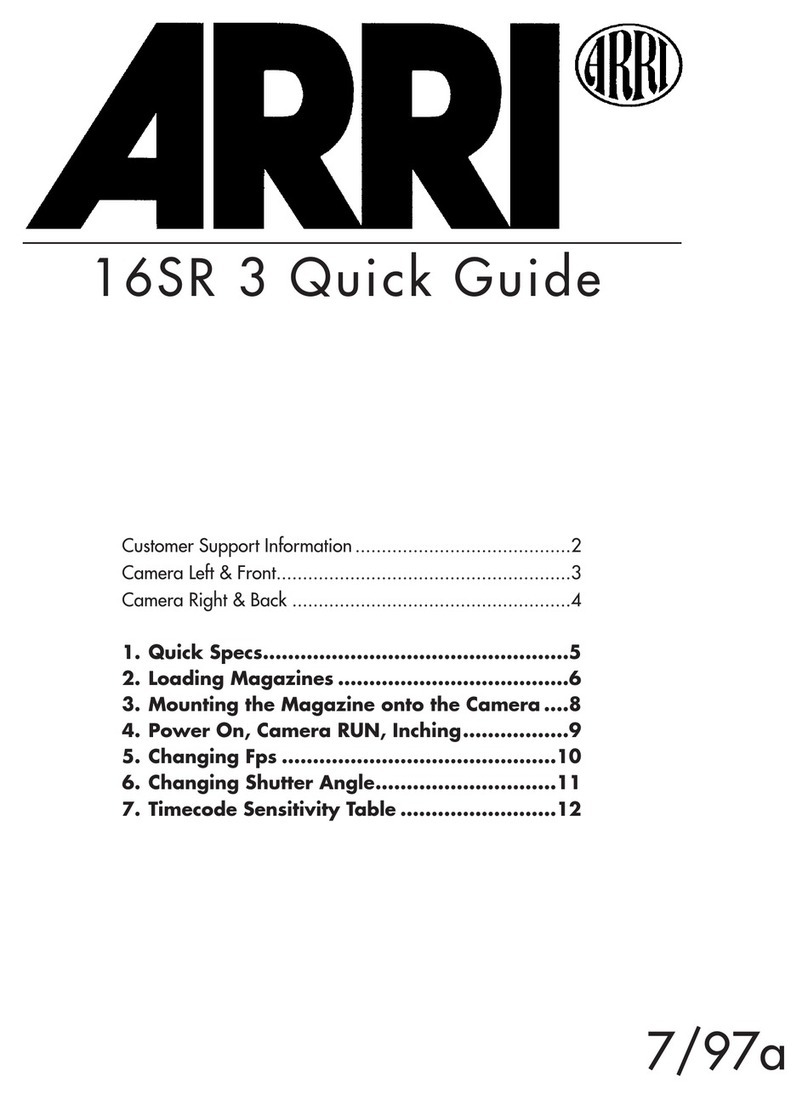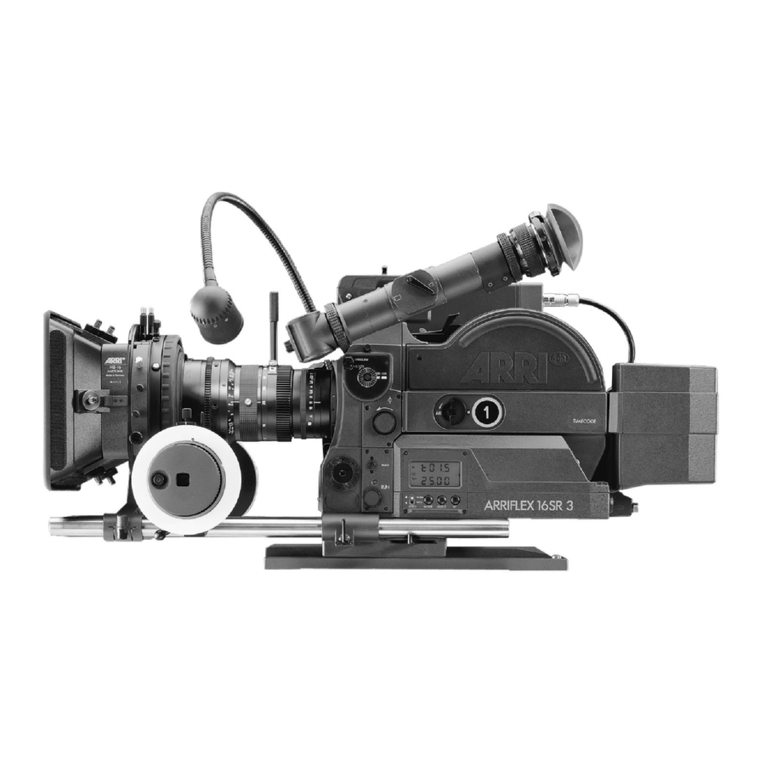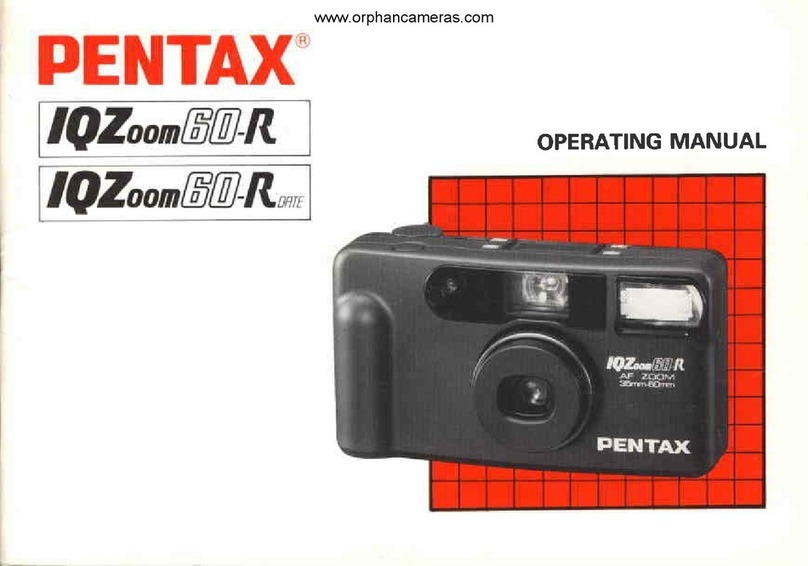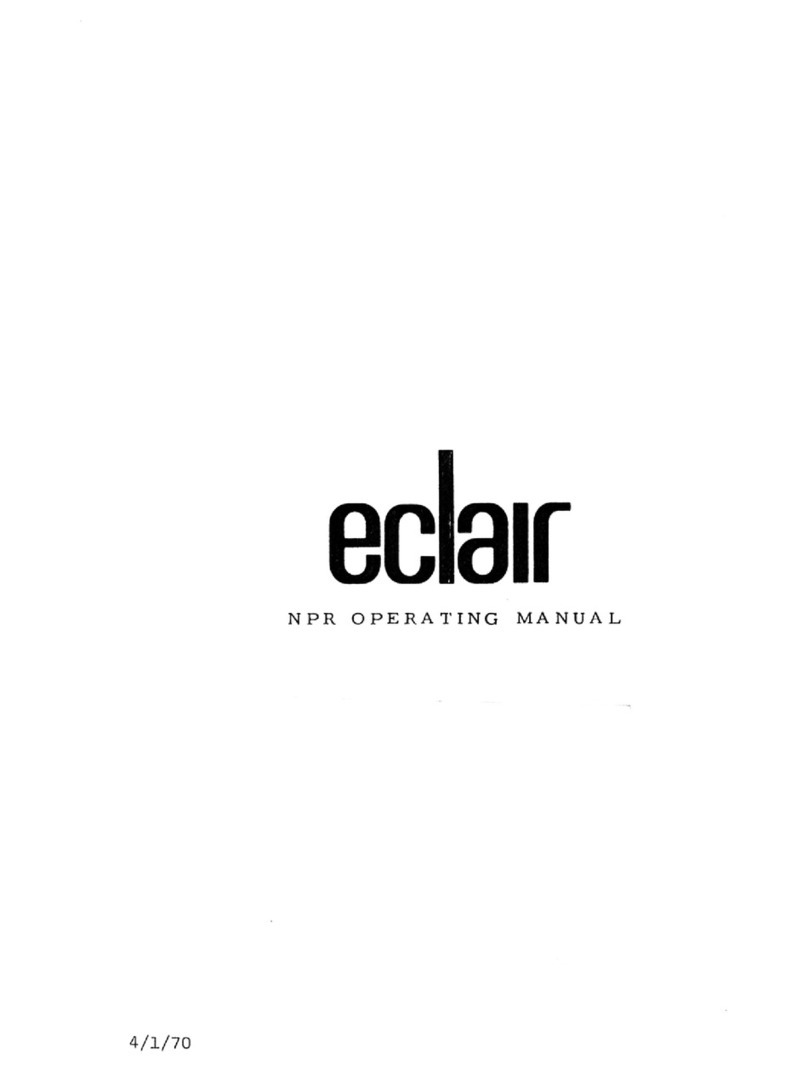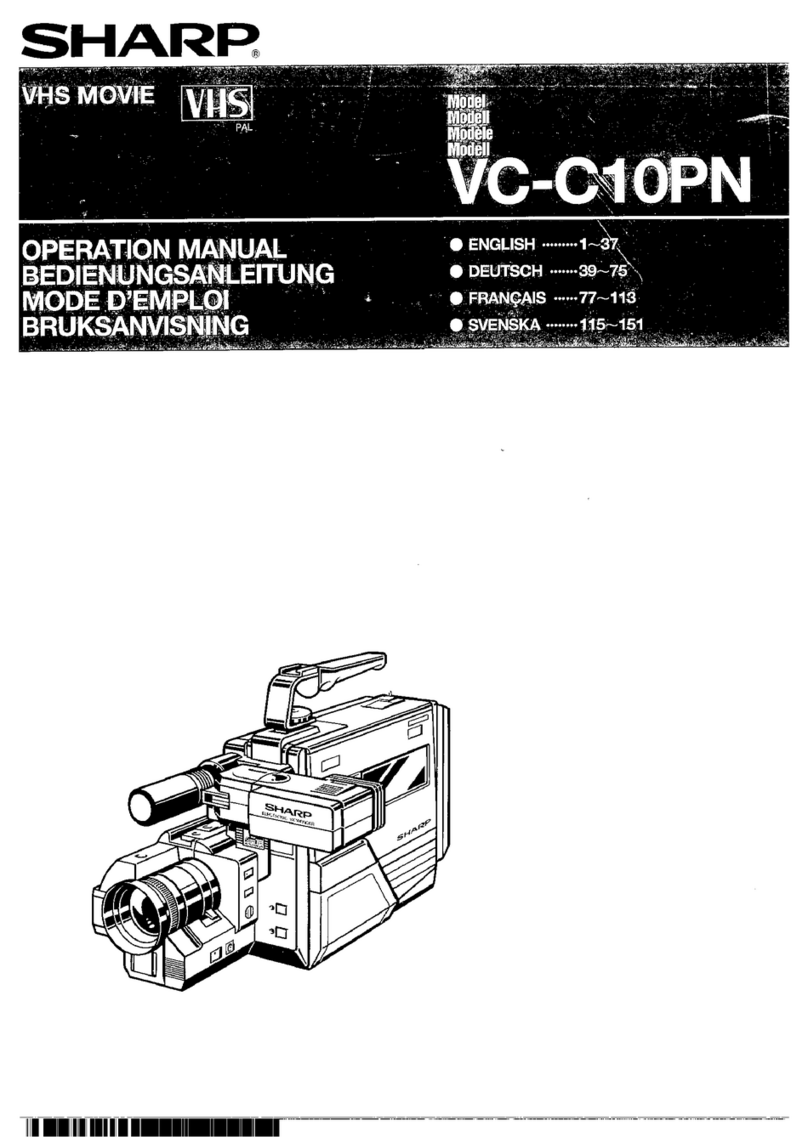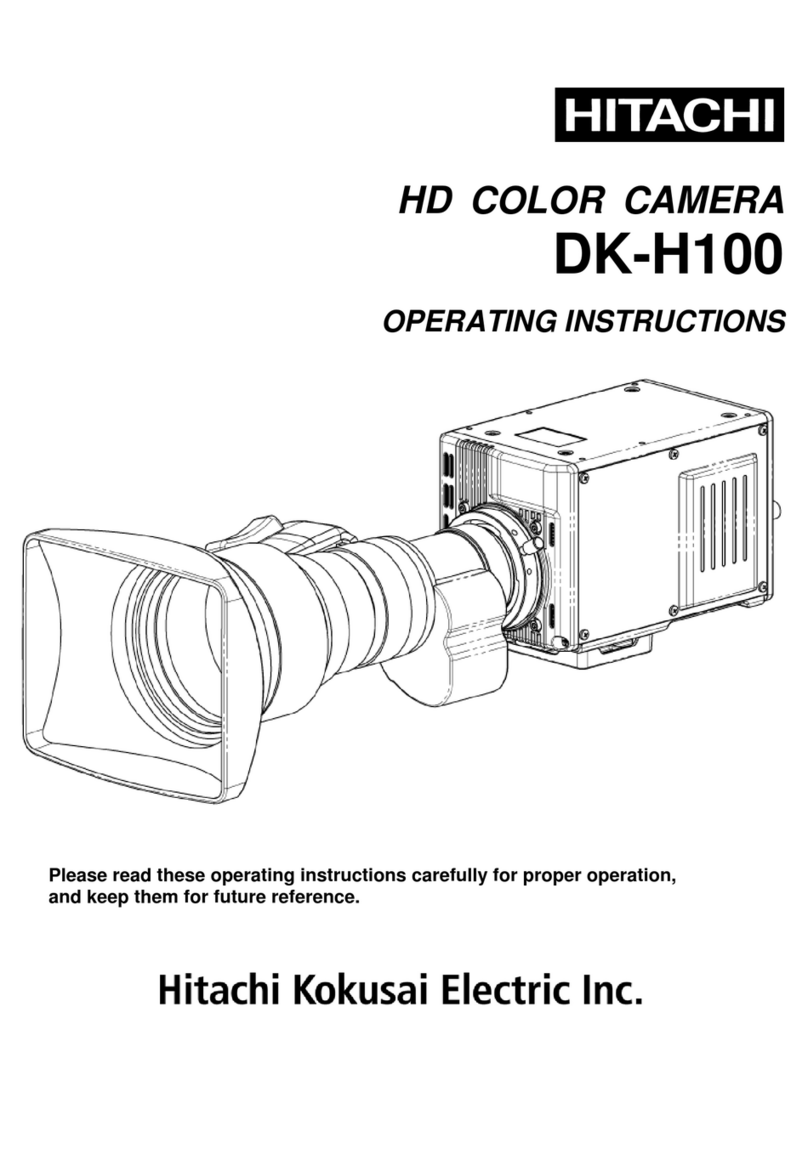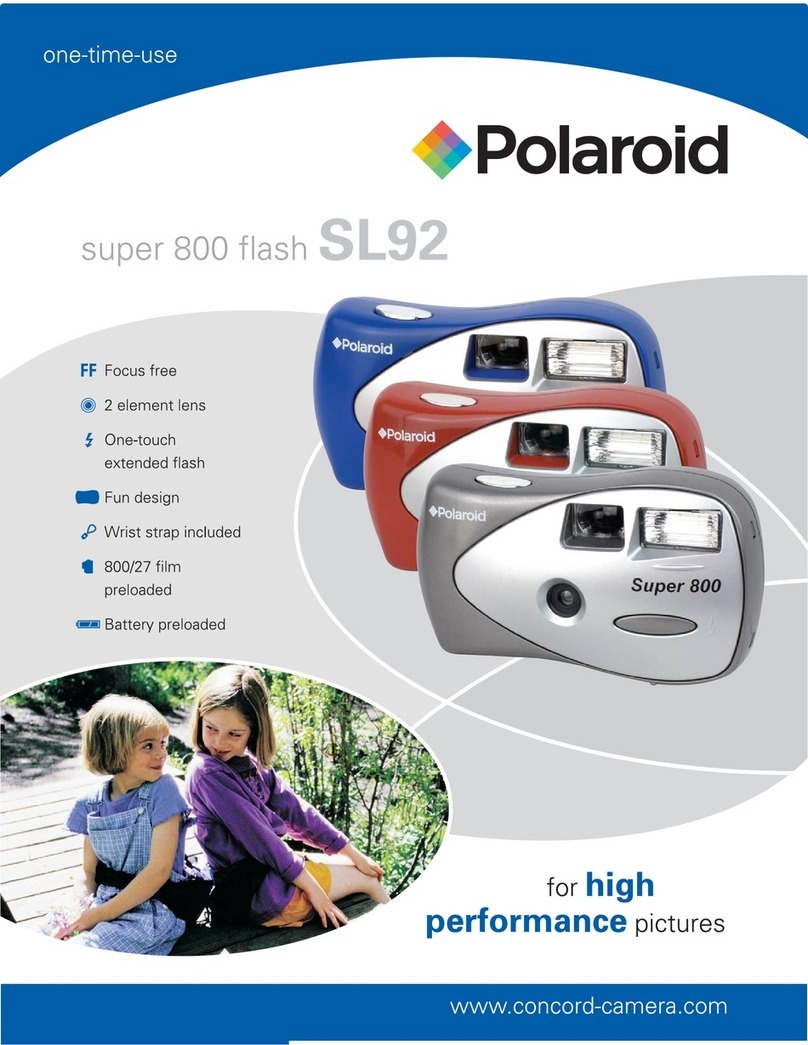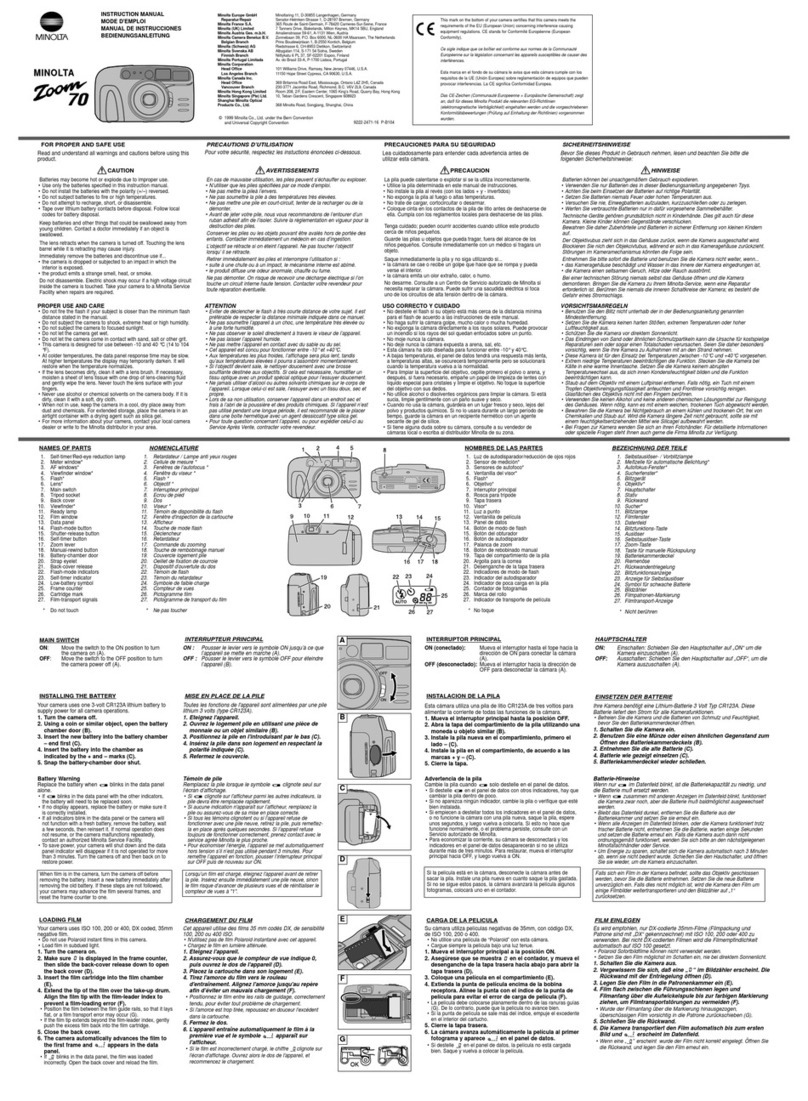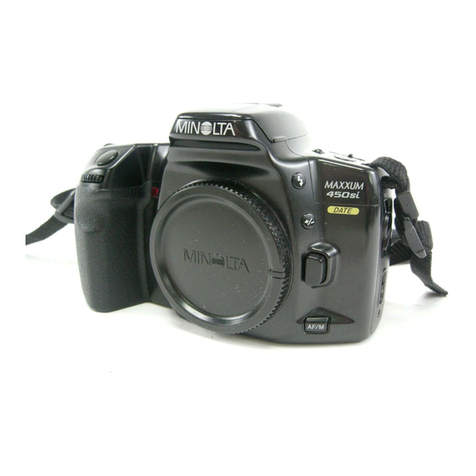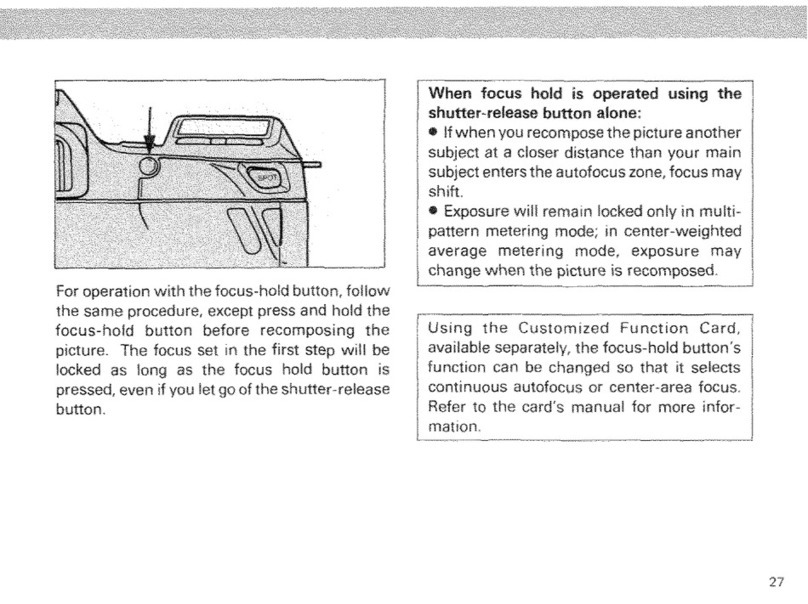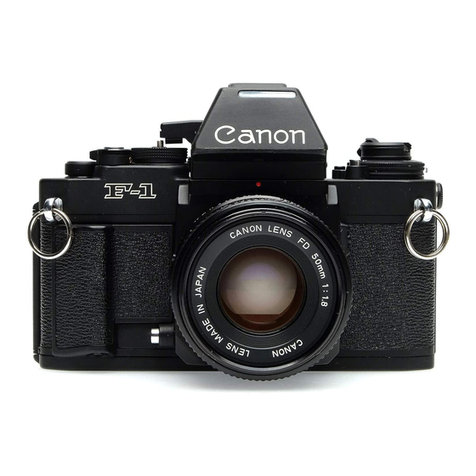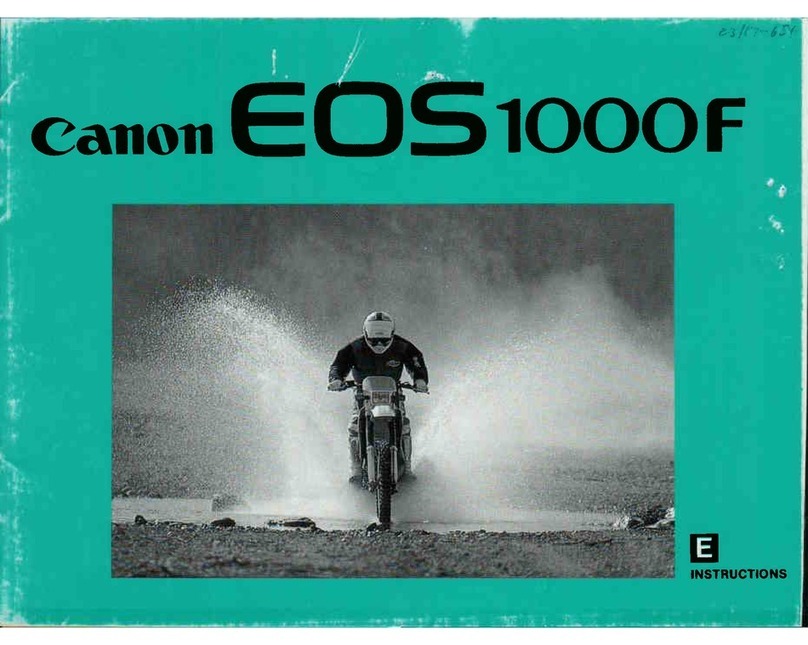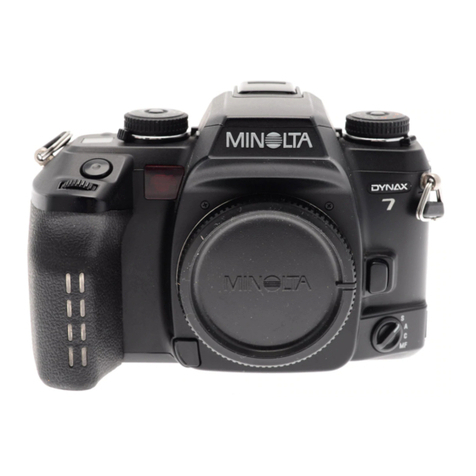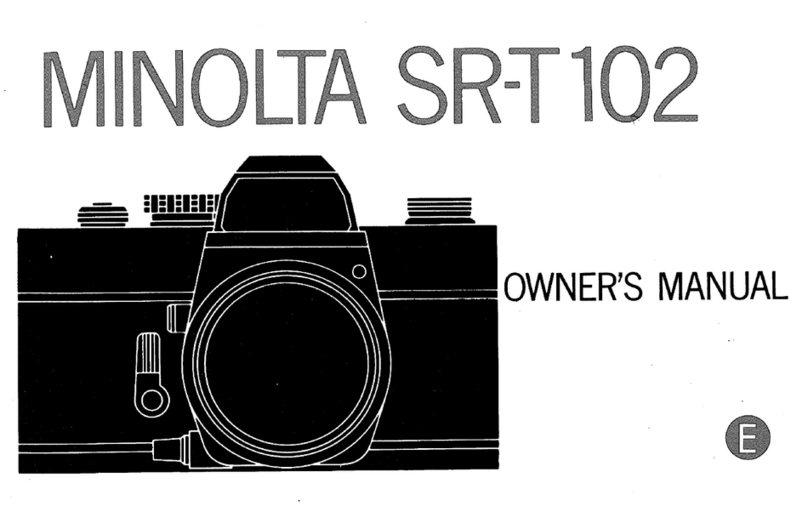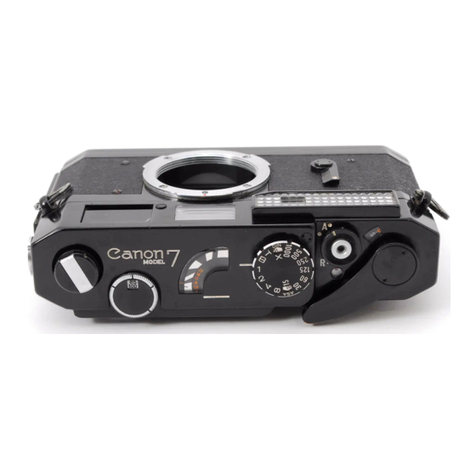
1
ARRIFLEX–S ARRI–S
A versatile, compact, lightweight, well–designed camera for general use. Extremely well–suited for hand
holding. As sturdy and reliable as the FILMO A good camera on which to learn the basics of cinematog-
raphy. The camera every student wants to use.
Movement: Cam–driven, single pull–down claw and single registration pin. Claw engages film one
sprocket hole below film gate from front (emulsion) side. Registration enters film from rear (base) side.
Registration pin moves film into final position and holds it rock steady during exposure. Perfect registra-
tion forward or reverse. Specially designed aperture prevents film “breathing,” providing optimum sharp-
ness. The pressure plate is hinged to allow access directly to the aperture and to the film guides.
Shutter: 180 ˚ mirror reflex shutter rotates at 45 ˚ angle between lens and film plane. Requires no expo-
sure adjustment. Exposure at 24 fps = 1/48 sec. In closed position it reflects image to finder. In open
position it passes image to film.
Lenses & Focusing: Reflex, through–the–lens focusing and viewing. Bright image. Focusing of lenses is
achieved by grasping “wings” or “butterflies” – which turn focusing ring on lens. Eyepiece has a diopter
adjustment; also has provision for prescription lens. To adjust diopter to your eye, rotate narrow scal-
loped ring on eyepiece clockwise. Rotate large scalloped ring nearest the eyecup until groundglass is
sharp or use focus test chart as outlined in
Working Procedures and Responsibilities for the Assistant
Camera Operator
section elsewhere in this booklet.
When focus is set, turn the narrow ring counter clockwise to lock diopter in place. As with any reflex
system, the f–stop on the lens should be set at its widest opening before focusing. Groundglass shows
full aperture and TV safe area. If you are looking through the viewfinder and you cannot see any image,
rotate inching knob until mirror–surfaced part of the shutter is back in viewing position. Do not take
eye away from viewfinder while filming or light will pass through the viewfinding system to the gate
and fog the film.
Some ARRI–S models are equipped with an automatic eyepiece closure device; as you press your eye
against it, it opens; as you pull away, it closes. To lock autoclosure device open, pull eyecup from finder
and rotate inner knurled lock–nut clockwise. Replace eyecup.
Lenses are mounted on a 24 ˚ divergent three–lens turret. Lenses are: 16mm, 25mm, and 50mm.
Accepts a wide variety of Arri–mount lenses available at rental houses. Lens is placed in filming posi-
tion by rotating the turret: grasp grip opposite filming lens. Turn until desired lens is in place nearest
the contour grip at the right side. Turret “clicks” into place. Lens turret grips are coded so lens in
position can be identified by camera operator from rear of camera. Wide angle lens – one dot; normal
lens – two dots; telephoto lens – three dots. Lenses should be mounted opposite the data mark to
which they correspond.
To mount lens on turret: Make sure mirror–surfaced shutter is out of the way. To check this, look through
viewfinder and rotate inching knob. When you can no longer see an image, mirror is out of the way.
Rotate lens until channel in the mount aligns with the infinity mark on the lens. Grasp lens by the
footage ring. Squeeze locking levers at each side of the lens port on the turret and insert lens into the
port with the follow – focus “butterflies” up. Slide the channel at the rear of the mount over the guide
key inside the lens port. Release the locking levers. Gently check to make sure lens is attached.
